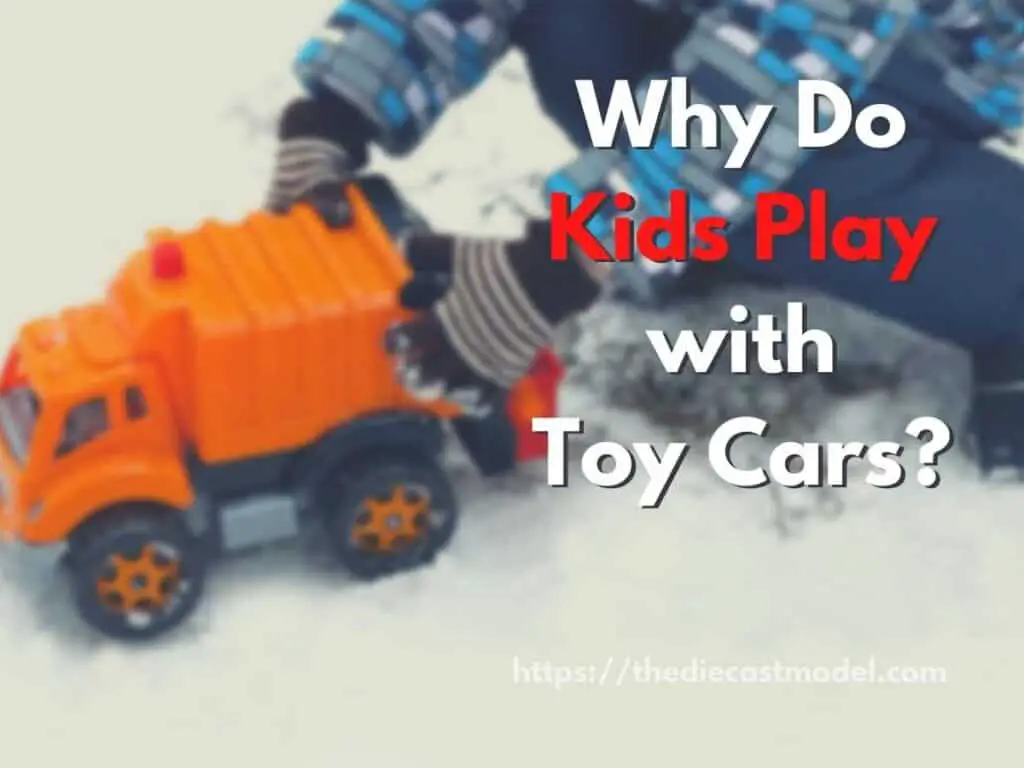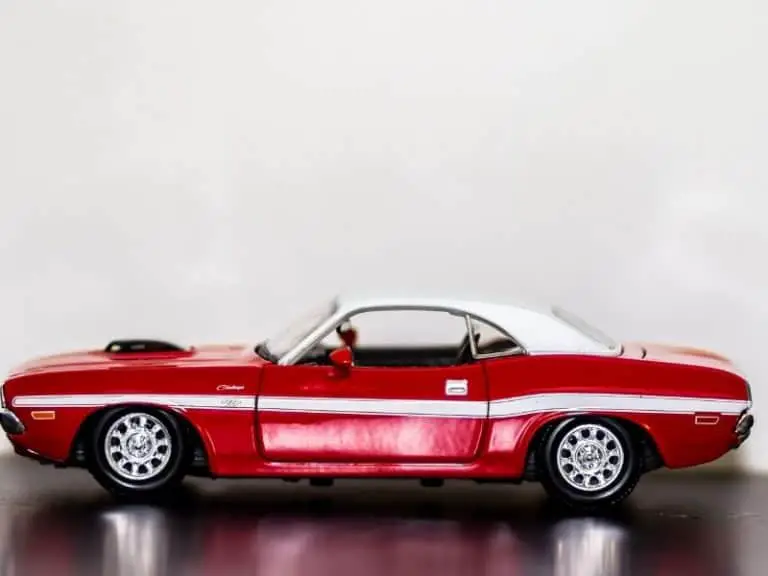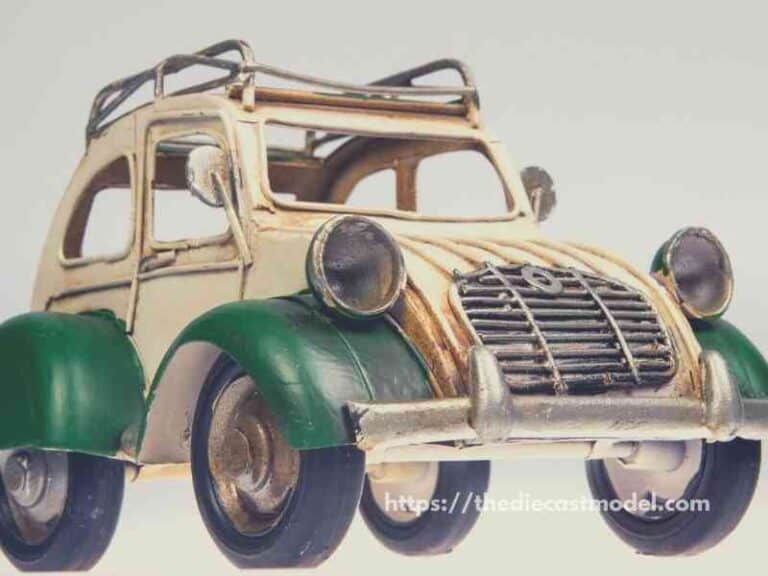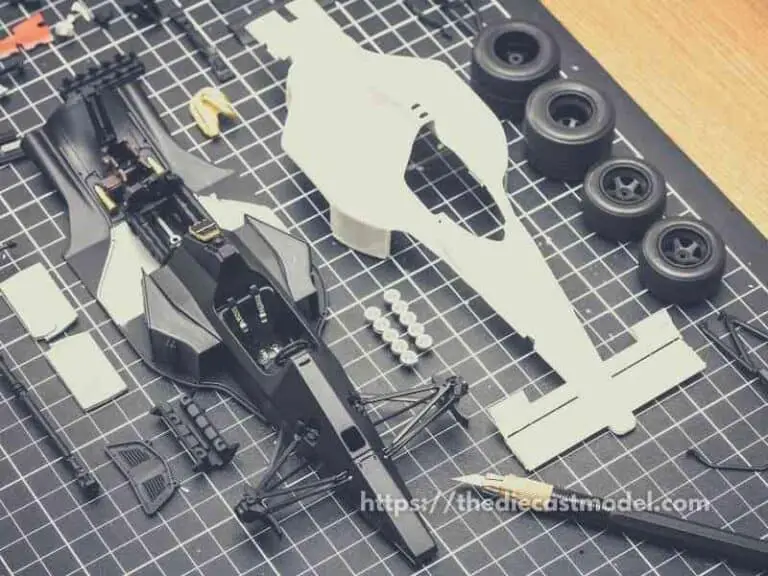Kids: Why Do They Play with Toy Cars? | A Parent’s Guide
With the rise of smartphones and tablets, it can be frustrating for parents to get their children out of screentime. While the effects of screen time on children are still being debated, many parents want their children out of screens.
Toy cars offer a good alternative for children to play with other than phones or tablets. Also, playing with toy cars has been shown to help children learn about science, technology, and basic phonetics. Lastly, toy cars can build children’s imagination while playing.
I remember when I was a child, and I always imagined different scenarios inside my head. I also remember clearly that I am always looking forward to playing since I can have some time with my parents after their work. In this blog post, I will give some reasons why kids should play with toy cars.

Why Do Kids Play with Toy Cars?
Kids play with toy cars because it offers a way for them to practice their imagination easily. Furthermore, playing with toy cars gives children a way to learn new things in a more practical and fun way. Lastly, it also provides a good time for children to play with their parents and guardians.
From the age of two, children are in the sensorimotor development phase, explains Alyssa Wilkins, a music therapist specializing in early childhood development and treating children with autism.
“They learn by assimilating everything with their senses: sight, touch, taste, smell, hearing,” says Wilkins.
Toys and real objects like cars are very sensual.
Children can interact with toy cars, trucks, etc., by turning their wheels, watching them move in different directions, or listening to the sounds they make.
Also, children are naturally drawn to noisy and moving objects – it’s all fun sensory input.
“You see the car lights, the wheels rolling, the sound of the engine revving, and it’s beautiful,” says Wilkins.
Children are always drawn to loud things because they appeal to their brain and sensory systems.
Playing with car toys can improve a child’s “gross motor skills” – these are the big physical movements like grasping, bending, pushing, pulling, as well as balance and coordination.
Playing with toy cars forces children to train fine and gross motor skills in a fun way.
In the simplest sense, children learn to move things. For example, they see how fast or slow the toys roll and learn what they can do depending on the pressure.
Furthermore, playing with toy cars is an excellent alternative to playing games on the phone.
We still don’t know the effects of smartphones on children. Or at least, it’s still inconclusive.
And while it is still inconclusive, parents might think that it’s better to let their kids stay away from these devices.
But not letting them play video games is hard, especially if you don’t have anything else to provide. So that’s where toys cars can come into play.
And I believe that it’s an excellent alternative to substitute video games because of the many benefits it can give to child development.
Here are some benefits of playing with toy cars to give more reason why children play with toy cars.
1. Toy Cars Provide Stem Learning For Children
If you are a parent, you have been filled with news about STEM teaching for the past few years.
From curriculum changes to STEM-based toys, this acronym pops up everywhere.
STEM learning is about science, technology, engineering, and math education if you haven’t heard.
However, rather than treating these disciplines separately, the MINT approach focuses on the real-world applications of all four as a cohesive learning model.
Playing with toy cars provides a fun way to learn about science, technology, engineering, and math in a fun way.
Rather than forcing children to go to class or read a book, they can practically learn these.
But take note.
Before purchasing dozens of toys with STEM learning tags on them, see how toy cars already meet that kind of learning.
Toy cars teach children the trajectory when they start their mini cars from a track.
Kids will learn about speed, distance, gravity, weight, and much more.
STEM-based education is about doing, not looking.
And toy cars and trucks give children this opportunity before they even enter the classroom.
Whatever you do, don’t think that, as a parent, you need to do more to give your child more access to STEM learning.
Trust us, they will learn by playing.
2. Playing Toy Cars helps in Motor Development
Playing with small toy cars promotes fine motor skills in children.
They develop dexterity and hand-eye coordination, and when children lift, carry, pull, push and pull small toy cars.
Fine motor skills are vital. These skills complement each other.
Grabbing and moving toy cars allows the child to hold a pencil, cut it with scissors, and make a necklace.
As soon as they move into remote-controlled cars, their understanding of dexterity and hand-eye coordination improves.
3. Toy Cars Helps in Building Imagination
Imagination aids in the development of social, emotional, creative, physical, linguistic, and problem-solving skills in children.
These are essential skills to develop in early childhood, as they can be good markers for understanding a child’s overall development.
Toy cars help children build an imaginary world around them.
You will see it by watching children create paths and streets with everything from arms and legs to books and counters.
They make up whole stories about cars hitting and running away from bad guys.
Toy cars can develop children’s imaginations, just like how dolls also develop imaginations.
4. Toy Cars Teaches Cause and Effect
By practicing cause and effect, children can more efficiently understand new information.
Children begin to develop cause-and-effect thinking skills as early as eight months of age 2.
Cause-and-effect thinking, or causality, allows us to make inferences and reason about things that happen around us.
Roll, run, fall, chase – all of these actions and more help children learn to react.
As a child push the car, they can watch it pull away from them.
If cars collide, they can see the effects of a crash if a vehicle rolls over or rolls on impact.
An example is when a child loads his toy cars onto the toy truck, he can be surprised and then excited when the cars came out of the back of the truck when the rear ramp was not closed.
He had to repeat the action over and over again to see what happened.
5. Toy Cars Can Help Form Bonds with a Child
One significant advantage of Toy cars is that it helps a parent get a good bonding time with their children.
Rather than letting children play with smartphones and tablets, you could play with them with toy cars.
This can build your relationship together and is an excellent way to spend some free time.
6. Toy Cars help in Cognitive Development
Children learn by playing. And it is this playful learning that builds a child’s understanding (or cognition).
Children get to know the world and their role in it. For example, they know that they get into a car to go places.
Playing with cars and trucks puts them in the driver’s seat once.
Children love to be in control of their environment.
And while they are still years away from getting behind the wheel, they can begin to exercise their free will while playing with small cars.
They learn cause and effect by playing with small cars. Learn that a whole car consists of individual parts.
They would first learn the word car. Soon they will know about tires, doors, windows, etc.
Conclusion
An essential feature of playing model cars is that it allows children to enter other worlds with a focus that is rare in adults.
They learn to imagine and see the real-world applications of physics, and other practical life lessons.
For example, when they started playing with a toy car, they showed interest in drawing a picture of a vehicle, and they tried out a different role, such as the car itself or the driver.
That’s how your children learn empathy and develop the habit of creative thinking.
What’s next? If you are interested in the safety of these toy cars, you may check this blog post: Are toy cars safe?

“Only the things I love”
thediecastmodel.com is reader-supported. When you buy through links on the site, I earn an affiliate commission.
So, here are the things I love when taking care of my Diecast Models.
Cleaning the Models
The first we are going to talk about is cleaning the models.
Removing Dust
- Air Brush – For me, this is the best since it not just removes dust but you can use it in painting/clear coating.
- Air Duster – This is a good alternative to Airbrush
- Normal Brush – If you are short on budget, you can use a normal brush. However, make sure that the brush has soft bristles because there are some hard brushes than can cause scratches. That’s why I recommended a good brush that can do the job properly.
Cleaning and Shining Hacks
Well, here are some of my cleaning hacks for removing scratches, oxidation, and so much more.
- Removing Decal Adhesive – Use Goo Gone on those hard-to-remove decal adhesives. It works fast and works like charm!
- Waxing and Polishing – Here is something a lot of people don’t know. Waxing protects the clear coat and paint while polishing shines the model. Instead of buying it separately, use a 2 in 1 to save money. Get this instead.
- Beginner Wax – The wax I recommended earlier is good and provides the best results based on my experience. But a beginner might have a problem especially if they’re not good at applying wax. Solid wax reaching hard to reach surface can be hard to remove. You have two choices here. One is to use a qtips to reach those surfaces, another is to use a liquid wax I recommended.
- Cleaning Wheels, Rubber, Plastic – Do not forget that rubber and plastic surface are quite different, especially in the cleaning process. Just wiping it down won’t do the job. That’s why I use Meguiar’s Vinyl and Rubber Cleaner and Conditioner. Works like charm!
- Make the Wheels Shine! – Making our models look good won’t be complete without tiny details such as shiny wheels! Do not forget this because however small this is, the difference can be as big as night and day.
- Remove Scratches Easily – Tiny scratches are not the end for your model. Here is a simple trick I’ve been using to make my models look scratch-free even without repainting. Use T-Cut.
Painting the Models
Painting Tools
Make sure when you paint models, have these ready.
- Tape – A tape is important if you are painting a straight line. Furthermore, it will prevent your paint to scatter on other parts. I recommend Tamiya Tape since it is really made for models. Furthermore, they stick really well preventing paint splatters.
- Brush (Beginner) – Find a good set of brushes to paint your models. Of course, you can opt for an airbrush but it’s quite expensive.
- Airbrush (Intermediate/Expert) – This will yield a significantly better result than an ordinary brush because you can easily spray the paint evenly. I recommend this if you know what you’re doing.
- Stand(Optional) – Stands are good because it can be hard to manually hold the models while painting. It is optional but in my opinion, the price is well worth it for the comfort it gives.
- Drop Cloths – Drop Cloths will protect your surroundings from the paint.
- Primer – The most common beginner mistake I see is painting models without any Primer. A primer will prevent imperfections such as bubbles or paint not sticking to your models. It is a small price to pay for quality results.
- Clear Coat – A clear coat will protect the paint of your models. This will make the paint last longer. Also, it is the one responsible for making your models shine.
Paints
Of course, you can’t do painting properly without paint. So here are the ones I recommend.
- Acrylic Paint – Good for beginners because it dries quickly. However, it doesn’t produce results as good as enamel paint.
- Enamel Paint – Provides a good quality finish and longer-lasting paint. However, it takes longer to dry and requires expertise to use.
Model Maintenance
Model Storage
- Simple Wood Cabinet – While it doesn’t let you display your models, wooden cabinets are good storage for these models. For one, they are not heat conductors which means that the temperature inside will remain constant and remain cool. Furthermore, they prevent light from reaching the models which can cause oxidation.
- Clear Cabinet with Lock – If you want to display your models, then I recommend this. It closes so dust won’t easily get to your models. I also recommend you don’t put more than 1 model in each compartment since metals are good conductors of heat.
Model Photography
So you want to show off your models to others? Well, I got you covered.
Here is my beginner-friendly model photography tutorial that teaches everything from taking pictures to the editing process.
You will also see me doing hands-on photography in that tutorial.
Here is the link: How to Take Pictures of a Diecast Model or Model Kit | Helpful Illustrated and Video Guide







